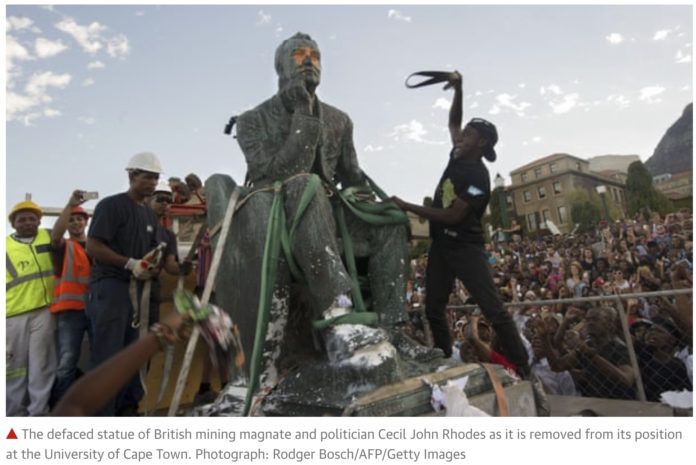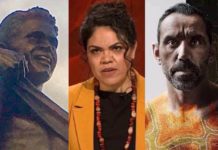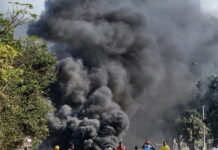
John Elsegood
4978 WORDS
Comparing an obscure Australian Aboriginal leader, Yagan, with the death of an international statesman and former South African PM, Jan Smuts, is not one usually made.
The former was killed in 1833, in the early years of the Swan River Colony (Perth), while the latter died peacefully, in 1950, after years of battles, both military and political.
Yet, ironically it is Yagan that has been treated kinder in the culture wars during the madness that has enveloped Western countries as exemplified by the acceptance of attacks on historic monuments, paintings and artifacts by political extremists, most notably in recent times by the cultish adherents of Black Lives Matter. Their only contribution is to link police shootings in the USA with every real and imagined grievance in other democratic countries.
While the monument to Yagan has twice been decapitated by vandals, (as was the real historical figure, after his death), his statue has generally been left alone and indeed this minor figure has been honoured with Yagan Square, in the CBD of Perth, being named after him.
Aboriginal culture and recognition, including place names and preservation, is increasing in Australian culture with 69 suburbs in Perth having indigenous names, plus many street names. The same cannot be said for South Africa over the last 26 years of ANC rule whereby the white’s history, traditions and main language, (Afrikaans), have been denigrated and attacked with racist restrictions in employment opportunities increasingly imposed. National days and cultural icons are vilified, changed or outlawed in the ‘new’ South Africa. Particular targets are any national celebrations/reminders of the ancien regime, like the Great Trek, Day of the Vow, the old national flag (1928-94), historical figures and achievements of the old governments of the Boer republics, Union and Republic. Indeed the old national flag, that pre-dated the apartheid policies by 20 years, is deemed ‘hate speech,’ in what can only be described as a travesty of justice.
The ANC had a chance from May 1994 to start afresh but like the French Bourbons of old they had learned nothing and forgotten nothing.
Take the imbroglio, in Standerton, over the Great Trek monument to celebrate, in the mid 1830s the great exodus from British rule, at the Cape. This seminal historical event was one of the great migratory patterns of history, designed to establish new homelands in the wilderness of South Africa.
In 2007-08 a monument established to commemorate the trek was ordered to be demolished by the mayor of the Lekwa Municipality, Queen Radebe-Khumalo. Her contemptuous dismissal of the monument- “it means nothing to us’’ – was on par with another queen who lost her head, Marie Antoinette of France, who allegedly said of the oppressed, “let them eat cake.” Subsequent court action saw an order to the Mayor and her Council to pay for damages and further, the court prevented the destruction of another statue to commemorate concentration camp victims. The camps were responsible for the deaths of almost 28,000 Boer women and children who were incarcerated in the Anglo-Boer War of 1899-1902. (At least 14,000 black Africans perished in other British camps). In 2010 the Great Trek monument was restored.
However, the cultural attack has continued, unabated, as illustrated with the removal of portraits and monuments of two highly significant historical figures during the last two ANC presidencies of Jacob Zuma and Cyril Ramaphosa.
Afrikaans Ancestors
While Nelson Mandela was South Africa’s most famous prisoner it was Field Marshal Jan Smuts that gave the country a profile in international affairs during two stints as Prime Minister (1919-24 and 1939-48). From the Anglo-Boer period to his death, in 1950, he was a figure of substance, particularly in the Commonwealth.
It was Smuts who was the Father of the Air Force, both the RAF and the SAAF. The Smuts Report was written in 1917 and the RAF was born on 1 April 1918 because of the then SA Deputy PM and Imperial War Cabinet member’s two part recommendations. The first dealt with homeland defence, the second with a co–ordinated service to deal with air warfare. The Smuts report has been referred to as the Magna Carta of air power.
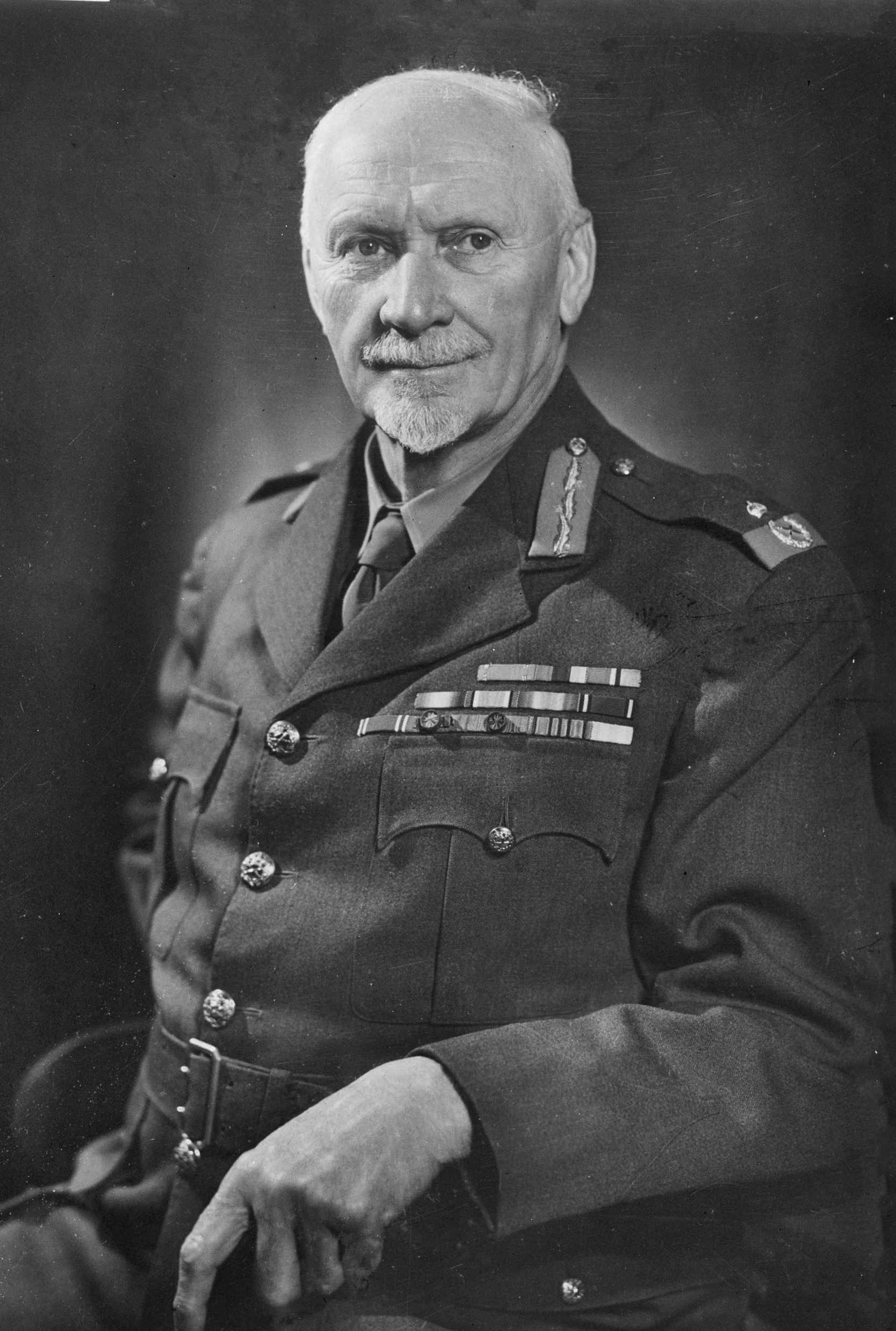
Air power, like the RAF, came to play a major role in World War 2 and the South African Air Force (created second to the RAF, in 1920) was also involved in that conflict, plus the Korean War.
Smuts and the first PM of the Union of South Africa, General Louis Botha (1910-1919) were active military leaders in African theatres of World War 1, and Smuts as South African PM in World War 2 was later a key player in the development of the UN.
One might think that brief synopsis of his political and military career would entitle him to an honoured place in the SAAF Museum. However, just as his name has disappeared from the title of South Africa’s international airport, in Johannesburg, so too has his portrait been removed from the country’s Air Force Museum. His painting, by Gordon Nissen, is referred to as ‘colonialism’ and was removed over two years ago by a SAAF reserve-sergeant with attachments to high ranking officers. The massive inferiority complex of today’s SANDF is highlighted by the fact that the SAAF was only allowed to hold centenary celebrations under the grotesque banner of ‘100 years of air power under 25 years of democracy.’
Similarly, the contribution of the SAAF Korean war display has items missing because of the belief that the country’s air force history commenced in 1994, rather than 1920.
Another celebrated Afrikaner MT Steyn, the last president of the Orange Free State has had his statue removed from the university in recent times. A dignified lawyer and judge, Steyn’s presidency which commenced on the 4th March 1896, of the independent OFS republic was marred by the smashing of his country during the Anglo-Boer war (1899-1902). After the fall of Bloemfontein (13 March 1900), and other short-lived centres of OFS government, Steyn was very much a president in the field, (and in the saddle), eluding the British in countless escapades across the veld. His courage was matched by personal decency. Despite striving for peace he was not to be blessed by being one of history’s peacemakers, failing against the machinations of British Colonial secretary, Joseph Chamberlain, and his Machiavellian envoy at the Cape, Sir Alfred Milner. However, the Steyn vision on education would be fulfilled after the war that destroyed his country and ruined his health. Due to his diligent efforts the OFS University was established as was the Oranje Girls High School, and also the National Women’s Monument – the first in the world – dedicated to women and children, a tribute to the 28,000 of them that had perished in the Boer republics, due to the ‘Milner legacy.’ Steyn’s final resting place would be at this Nasionale Vrouemonument.
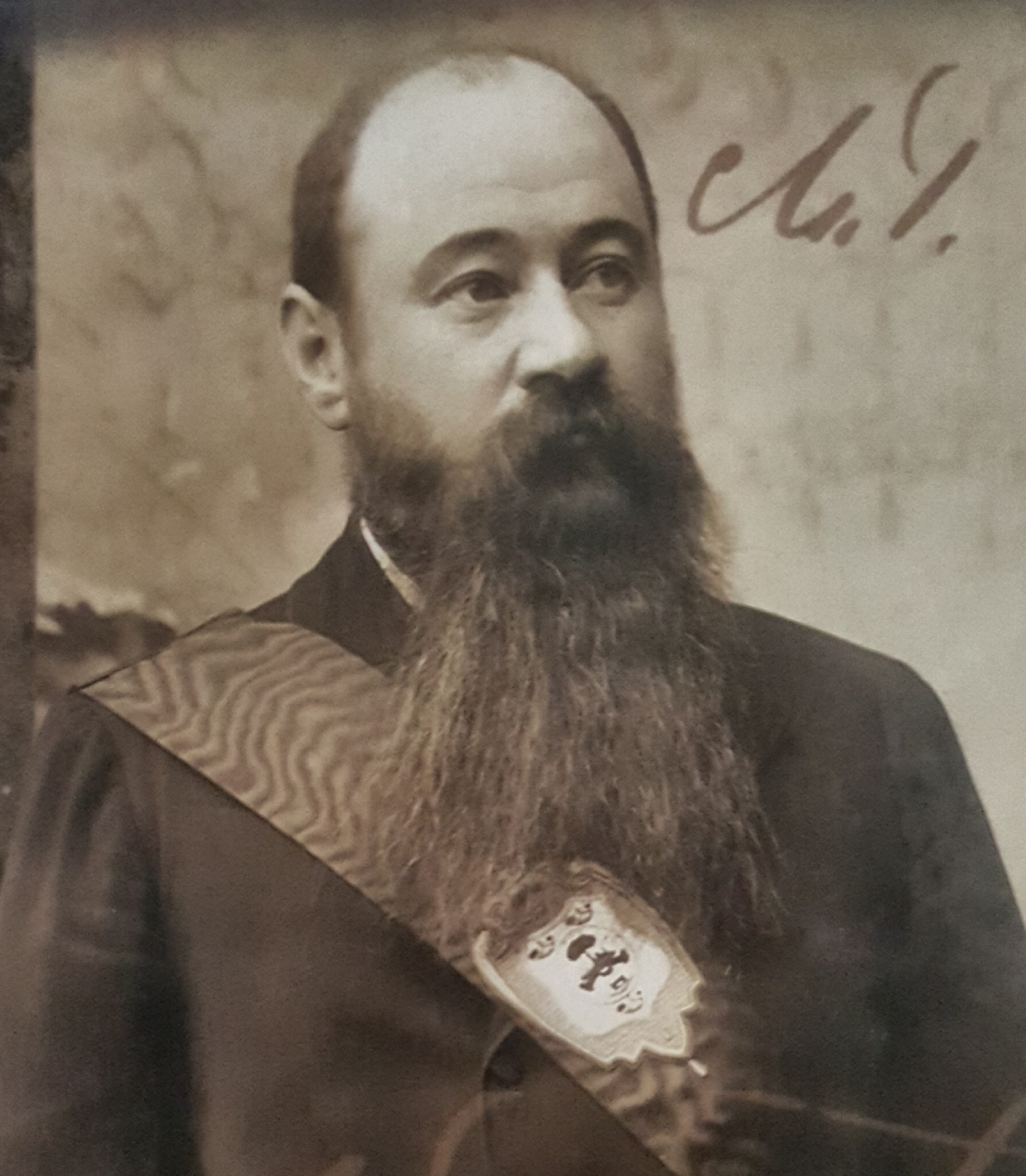
Any government really concerned with promoting social cohesion and seeking unity in diversity would not have allowed such a statue to be removed, to placate a minority of campus activists. However, the Marxist ANC is to national government what the Black Lives Matter cult is to Western community harmony –a disruptive wrecker.
Apparently a statue of Fidel Castro, (the murderous Cuban tyrant), in Bloemfontein is more important to the ANC than having a statue of a native son, of the old Orange Free State, remaining at the same city’s university! Indeed, Castro’s statue, in that city, replaced that of Charles Robert Swart, the last Governor General of the Union of South Africa and the first ceremonial president of the Republic (in 1961). His statue was toppled and burned by the mob while statues of President Kruger and former PM Johannes Strijdom are just two that have been attacked with paint. It is not compulsory to like such monuments but also not necessary to show absolute contempt for the history of others. Indeed, the all–Afrikaner National Party government, of 1948, did not seek to destroy all things British, after winning power in South Africa.
So while the ANC has traduced the RSA from an economic powerhouse to that of an outhouse, it has also ‘set the standard’ for the mob on the international scene, in the destruction and demand for removal of scores of monuments of historical figures, including Winston Churchill, Robert E. lee, James Cook, Cecil Rhodes, Andrew Jackson, George Washington, to name but a few famous British and American characters.
Just how any of this creates cohesion, unity, mutual respect is only known to those who engage and support these antics – but then their agenda is somewhat different.
Afrikaans Language
On the South African scene it is also part of an assault on the Afrikaans language. As The Citizen newspaper noted (6/3/18), in the Gauteng province, the Education minister, Panyaza Lesufi, was seemingly waging a war on Afrikaans, impacting not only White pupils but also Coloureds, with 119 schools being changed from Afrikaans-medium or Dual-medium to English–medium only.
The ANC denial of mother tongue education is against the letter and spirit of the Constitution that states that children should not be denied such teaching in their own language. It also, of course, detracts from the determination of the third Union PM Barry Hertzog (1924-39) not to accept the destruction of Afrikaans, insisting early on dual– medium, or a two stream, language system.
Yet, when the same minister tried to force 55 English speaking students on an Afrikaans school, at Overvaal, the move was thwarted by the Constitutional Court that remained unconvinced any real attempt had been made to place the pupils in nearby English medium schools. All too often Lesufi seems to be seeking ways around Sec. 29(2) of the Constitution that provides for education in an official language of choice. His obsession with Afrikaans schools has continued. On the 19 June 2020, Lesufi told the Gauteng Provincial Assembly that race-police were needed to report on teachers and schools that could be racist. This is the action of a political goat in a search for scapegoats. Indeed, Lesufi is like a black Milner after the defeat of the Boers in 1902. ‘Milner, unmindful of history, proposed to attempt what Somerset had failed to achieve eighty years before. He would get rid of the Boers written and spoken language once and for all; and there was no better place to start than in the schools. The whole educational system of the Transvaal and the (Orange) Free State was swept away. Gone were the Dutch superintendents, inspectors and officials and the local schools committees that had some say over the appointment of teachers. There was not a single Dutch name on the new list of school inspectors’……. (‘The White Tribe of Africa’ by David Harrison, p53). Lesufi and the ANC comrades have learned nothing and forgotten nothing from the colonial and Apartheid eras.
Lesufi was also opposed to the union, Solidarity, building a private Afrikaans speaking university because it ‘concealed a hatred of a new democratic South Africa,’ (Business Tech 23/9/19).He also wants the Orania enclave in the Karoo region, Northern Cape dissolved. Built in 1991 this Orange River settlement of 1600 people is meant to be a stronghold in which to keep the Afrikaner’s language and identity, forever. Anyone who identifies with Afrikaner ethnicity can live there. Seeking to dismantle a place that poses no threat to the State is simply overkill and would be as nonsensical as the US trying to dissolve the Amish communities or the Western Australian government moving against the comedic-secessionist Hutt River Province, established in 1970, by the late ‘Prince Leonard.’
What this functioning Afrikaans speaking ‘monument town’ does do is to remind us all of the manic desire of the ANC regime’s blatantly exclusionary and discriminatory policies of which monuments, symbols and cultural items are a part. It is precisely because of aggressive ANC policies towards the minority that such a sanctuary is needed
As the last National Party president of South Africa, FW de Klerk, said at his Foundation’s annual dinner (31/1/20):
”The factions that have led the ANC since 2007 have no intention of honouring the agreements that were included in the 1993 and 1996 Constitutions. Instead they believe that they are still involved in a continuing revolutionary struggle to achieve fundamental change.”
Mr de Klerk went on to say that language and cultural rights – among many other areas – ‘are being ignored by the government and are being eroded by the courts.’ He was correct in arguing that the attack on statues, art and language is part of the bigger ANC goal of having a society in which racial policies intrude on everything, in accordance with the percentage that each race group represents in the national population. Thus, as Mr de Klerk noted:
”The demographic representivity’ that has already been implemented rigorously in the public sector ‘…… is to be applied with the same fervour in the private sector, at our universities and in our sports teams.”
In short, such a policy envisages government by slide rule and quotas.
The BBBEE
The BBBEE (Broad- based Black Economic Empowerment) and changing the Constitution, to expropriate private property without compensation, are part of the Orwellian world of the ANC.
In section 1 of the BBBEE Act it defines Black people as a generic term meaning Africans, Coloureds and Indians. However, since no South African is classified officially as Black, Indian, Coloured or White anymore (after the former de Klerk “White Govt” abolished the Population Registration Act, (1950), in 1990, the question arises : who are the Blacks in the ‘non-racial’ society of the ANC? The current regime expects citizens to engage in self classification, on the one hand, yet it has bureaucrats override such a decision by individuals if they believe that is incorrect on “historical and other factors” – and these factors, of course, are undefined. Oh, what a web is spun when those in power seek to deceive and manipulate!
The unfairness is exemplified in the case of Renate Barnard, a white female police officer who fought a nine year court battle after twice being the preferred candidate for the rank of superintendent (later changed to Lt-Colonel). Her battles commenced in late 2005 and lasted until she left the Police in 2014.
She was deemed unsuitable for ‘equity reasons’ –in other words because she was white– by the Constitutional Court in September 2014. The then female Police Commissioner, Riah Phiyega (2012-15), hailed the final legal battle as a victory for affirmative action:
“We recognise the significance of the Barnard case…..This is a very significant finding that affirmative action is legal and that it is necessary,”
So necessary that a clearly qualified and preferred white female officer is denied ‘equity’ while the position she won was left unfilled as her appointment would have adversely affected the equity levels of the relevant job level of the SA Police Service! (You couldn’t possibly make this sort of language up).
Phiyega, who had no police experience prior to being appointed Commissioner in June 2012, was selected by the then President, Jacob Zuma (2009-18), himself now facing 18 charges of corruption and over 700 counts of fraud and money laundering. Phiyega was removed by Zuma in Ocober 2015 – for perjury and ignoring internal processes! In fact four SAPS commissioners, in succession, were dismissed over corruption, but none before 1994, under the old SAP.
But according to the current State President, Cyril Ramaphosa, the coronavirus is the reason for ‘Black Economic Empowerment to be ‘enhanced, as part of a push to build a more inclusive economy’. According to Ramaphosa because of the exclusionary years of apartheid and colonialism:
”We’ve got to ensure that we implement the provisions of the Constitution…..to obtain equality we have got to have legislative measures that will allow us to do precisely that. So BEE is here to stay.”
Ramaphosa and his failed regime are in contravention of international labour law that specifically rejects this sort of blatant discrimination. The ineffectual UN committee on the Elimination of Racial Discrimination (CERD) has warned the RSA that affirmative action may not lead to unequal or separate rights for those groups, after the objectives for which they are taken have been achieved (CERD 69th session, 2006).
In a paper written in 2016 regarding self determination, lawyer Paul Kruger (now deceased), said the above information was forwarded to the ANC, and nothing changed except an acceleration to have less whites in state departments. Kruger wrote the goal of ANC affirmative action already transgresses the limits imposed by international law. “The ANC objective is to attain a racial quota in the workplace (amongst others) of around 90% non-Whites.” However, the International Covenant on the Elimination of All forms of Racial Discrimination explicitly states…… that special measures for certain groups must be limited “to protection as maybe necessary to ensure equal enjoyment of human rights and fundamental freedoms. Nowhere does it provide for, or legitimise a racial quota in the work place based on demographic data” (Memorandum: ‘Settlement of the Boer-Afrikaner People’s claim to territorial self determination. p170)
The blatant racism has led to people being appointed to positions for which they are not qualified and South Africa slipping from a country with First World standards to a failed state with the attendant collapse in basic amenities in health, water, electricity supply etc. This has become a country where unchecked crime, degeneration and corruption, thrives.
The attack on monuments and symbols has thus become a crass attempt to deny a past where things were done; in a world that was not just one dimensional, as the ANC would have us believe, about the period 1910-94.
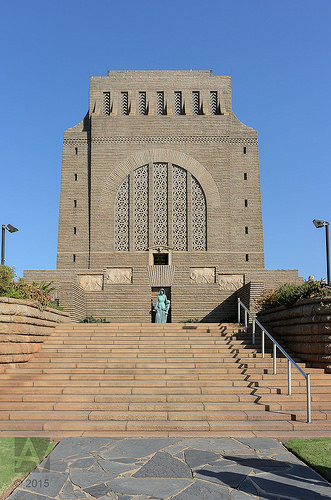
Day of The Vow
The ANC attempt to dictate is not confined to home soil. In 2015 its Marxist approach was to protest about the old national flag, the orange-white-blue that was displayed rightfully at Cooma, in that Australian Shire’s Avenue of Flags, designed to commemorate those workers who were involved in the building of the Snowy Hydro Electric Scheme – itself an Australian icon and monument. It was a fine gesture by that Council to honour the many foreign workers, as well as Australians, who labored and built something of substance.
Accordingly the old SA national flag, in that post World War II era, was certainly appropriate in the Avenue of Flags, as South African workers were part of the Snowy history. To his everlasting credit the Cooma-Monaro Mayor, Dean Lynch, in 2015 would not be bullied into substituting the flag of the time with the current RSA national flag:
“They’re historic flags, this is nothing to do with politics, they are the flags that people lived, worked and died under, while the Snowy scheme was being built.”
The RSA High Commissioner to Australia, Sibusiso Ndebele, complained that it was “honouring the old apartheid flag,” but as the Mayor said there were other flags of countries flying that no longer existed. Cooma-Monaro Shire, to placate the ambassador, then put the current RSA flag and other newer national flags in a different location, to mark the change. Clearly the era of ‘petty apartheid’ has been resurrected by the ANC!
One Afrikaner monument that set the pace for Australia’s War Museum was the Voortrekker Monument (VM) – in Pretoria. The VM from inception (16.12.49) had the Voortrekker leader Piet Retief as a focal point, something the AWM (11.11.41) lacked until the return of the Unknown Soldier in 1993. However, where the AWM was hailed the VM and the Day of The Vow (or Covenant) attracts nothing but modern day criticism. In fact the day is now called Reconciliation Day, supposedly to mark the great strides in reconciliation of the country, by taking away the previous name given by the Afrikaners!
President Ramaphosa’s speech of December last year highlights his attitude of what he thinks reconciliation is all about, when he said:
“Brave Zulu warriors with assegais succumbed to the firepower of the Voortrekkers…the Ncome River ran red with the blood of these freedom fighters.”
Ramaphosa then linked this event of 1838 with the savagery of apartheid, the dispossession, oppression and forced removals. No context was given in this rant against South Africa’s minority and the speech, in a nutshell, provides a cameo example of the lost opportunities of the ANC, in its abject failure to truly be a rainbow nation instead of a revenge one.
For a start the Voortrekkers were moving away, from British rule at the Cape, into the SA hinterland, in the mid 1830s, to escape from the ‘colonialism’ of the time (which was certainly not all bad but a system some of the Boers no longer wanted to live under). Great swathes of land had been de–populated, in the Mfecane (hammering), by the murderous regimes of Shaka and Mzilikazi, in the forming of a Zulu kingdom, that saw between 1-2 million other blacks being slaughtered in the area that today is known as KwaZulu–Natal. It should also be noted that only a section of the Voortrekkers were then in Natal and there were no Zulus in the Orange Free State or Transvaal, areas where other Boers had occupied. These were early days in migratory patterns of both blacks and whites.
Ramaphosa’s shoddy speech makes no mention of the ‘savagery’ of blacks ‘dispossessing’ blacks, in Natal, nor of Dingaan’s deceit of Piet Retief and his men. Retief had negotiated a treaty with Dingaan after the Boers had returned his cattle, previously captured by another black group. Dingaan signed a deed of cession to the Boers before inviting them to a feast. At a given signal the Zulus fell on Retief’s unarmed men, at the celebrations, murdering them, all in front of the Voortrekker leader, (including his son), before Retief too was despatched.
Following that, the Zulus then carried out other savage atrocities at a number of places, including at Weenen – place of weeping – where some 532 men women and children were massacred in barbarous fashion. At the end of 1838, at the Ncome (Blood) River battle, some 464 Voortrekkers (plus 200 servants) fought off at least 10,000 Zulus, (some estimates say 15-20,000), from behind wagons. The Boer laager fire inflicted 3000 deaths on the Zulu attackers, with three Boers being wounded (including their leader Andries Pretorius). Those grim statistics alone give reason for the VM being built and the day being held as a mark of respect for prayers answered. They also give lie to Ramaphosa’s history distortions on 16 December 2019.
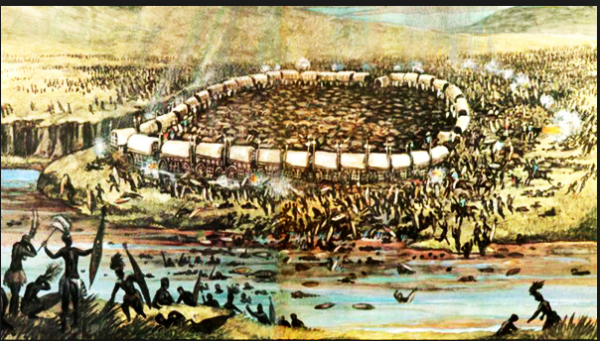
However two years earlier when SA ex-pat, Rudi du Plooy spoke to 20 people, in a church at Hamilton NZ, about the importance of that day to him, it was all too much for a journalist, Florence Hamilton. Under the florid heading, South African ex-pats revive racist Afrikaans day in NZ, Kerr breathlessly informed us that the Day of the Vow is on the website of David Duke, a KKK Imperial Wizard! So what? Does that make her racist? No, but her statement makes her a fool.
Kerr’s attempt to ‘work up the story’ fails when even she writes that James Casson, an invited Hamilton councilor, said the central message from the sermon was ‘that people should be kind to one another.’ If Stellenbosch history professor, Albert Grundlingh wants to label du Plooy as ‘racist’ then he clearly needs to elaborate more, as does Kerr, in quoting him. If du Plooy wishes to express concern with the removal of the Day of the Vow and the high rate of attacks and violent crimes on South African farmers he should be entitled to do so, in any democracy, without being verbally assaulted and given a repugnant label.
No doubt Grundlingh would have rightfully been concerned with the attack on another Afrikaner historian, Floors Van Jaarsveld, as he spoke on the Great Trek at a lecture at UNISA (University of South Africa) on 29 March 1979. As the professor was speaking an ultra-right wing politician, Eugene Terre Blanche, entered the lecture with 40 of his men and proceeded to tar and feather the academic. Given that history, and worse, it ill-becomes Grundlingh to launch a verbal assault on a person addressing a NZ church group of 20 people and who was manifestly not engaged in hate speech, according to those there.
Grundlingh himself has written an interesting 2001 piece on the VM as a changing symbol of Afrikaner power under the new regime (A Cultural Conundrum? Old Monuments and New Regimes: The Voortrekker Monument as a Symbol of Afrikaner Power in Post Apartheid South Africa). Should he be labelled as a sycophant to the new regime for expressing his opinion? No, and neither should du Plooy, be called a racist for his view.
White Genocide by Boiling the Frog
Also, the fact is that concerns over farm attacks are based on disturbing evidence. AfriForum’s statistics on them make for sober reading. They show an unacceptable pattern, from 2010 -2019. In those years annual attacks were 115, 96, 174, 231, 279, 318, 334, 342, 433 and 552. The murders on farms, over those years, ranged from a low of 48 (2011), to 72 (2017) with 57 last year. Some 42 percent of victims are in the 60-79 age group. The average number of attackers per farm is three.
The regional volunteer commando system (volunteer militia) was one ‘monument’ that had a practical use, dating back to the early days of the two Boer republics. This defensive citizen-militia was disbanded under the second black RSA president, Thabo Mbeki, with the Harrismith Commando of the Free State being the last to be disbanded. (Ironic, given that the first citizen of the OFS to fall defending his homeland against the British in October 1899 was Fred Johnson from that commando, during the Anglo-Boer War. He was of Scandinavian-English heritage). Why was this done? The dismantling of the commando system was apparently because it was a reminder of ‘apartheid era structures.’ According to one unnamed SAPS officer, farmers wanting area commando systems retained was because “they want their apartheid government back, they want to rule again,” (‘In Depth: Civilian Notification in Armed Conflict,’ IRIN, 3/3/03). Here again is race-paranoia writ large, plus historical ignorance, and cultural arrogance. Instead, it is the failure and corruption of the SAPS to provide safety that has led to the crisis in rural areas. SAPS also refused to release statistics on farm attacks for over a decade, (from 2007-18).
However, given the attitude of the last two presidents Zuma and Ramaphosa it is hard to escape the conclusion that the ‘buck should stop at the top.’
When a political leader can go on stage and sing “Kill the Boer’ (as Zuma did as president), when an ANC member of parliament can respond, in a debate on farm killings, by saying “’bury them deep” and when Ramaphosa talks about ‘boiling frogs (whites) slowly’ it hardly inspires confidence in the minority that they will receive fairness – and they have not.
The ‘silence of the lambs’ (western liberals and Marxists) has been deafening over an issue – human rights – that they were so strident in condemning PW Botha and FW de Klerk for, when those two NP presidents were indeed reforming the domestic situation in South Africa. Likewise, Western political poseurs now walk silently by on the other side, seemingly unconcerned over an issue that was vital at the time – ‘a crime against humanity,’ was then the catch-cry.
Little acknowledgment was ever given to PW Botha by Western critics when he attempted to reform his country, at the time that the ANC was attempting to make it ungovernable. Not only that but apart from international pressure, from those who just wanted a capitulation, the internal pressure had seen the demise of the main Opposition party the left-liberal PFP (Progressive Federal Party) replaced by the right wing, Conservative Party. Nevertheless, Botha easily saw off that right wing challenge in 1987 – no mean feat in southern African politics where the conservative party usually triumphed.
In that cauldron President Botha managed to block Soviet–Cuban adventurism in Angola; provided a political structure for Coloureds and Indian representation; created black trade unions; removed a plethora of petty apartheid rules; stopped the forced removals of black people back to the Homelands; extended full property rights in and outside the Homelands; repealed the Immorality Act; substantially increased funding to African education; allowed mixed-race political parties; scrapped the hated pass laws; and repealed restrictive university access laws. Of course it was never enough for some, while today there is a deafening silence from these same types as the ANC government has imposed race-based legislation and restrictions on South Africa, complete with the Marxist sophistry.
Strangely one of the poseurs of that earlier era, Olof Palme, (twice Swedish PM) was, ironically, a man ahead of his time. He did not live to see the destruction of Zimbabwe, nor the economic and cultural failures in South Africa. Yet in 1970 he stood on the banks of the Zambezi and grandiloquently declared: “This is the border of human decency in Africa!”
As one of his countrymen, Lars Persson noted, “when someone attempts to utilise a physical boundary-a geographical feature- as a means of distinguishing between the virtuous and the damned, he takes a long step from the debatable, through the ridiculous, to the borders of lunacy.” (‘Borders of Decency’, Lars Persson,1987).
Persson went onto remind us that his late PM, (assassinated, February 1986), had only made solutions more difficult to achieve as the border of decency lies within individuals.
That lesson is one the ANC leaders have forgotten, or never learned, and they have only reminded us that the racist borders they impose on their minority ‘is a border that separates the meaningless babble of opportunists from the words of those who would show the way towards understanding and good will.’
Originally published at Something Else with John Elsegood.

